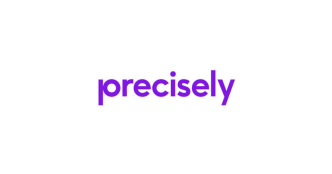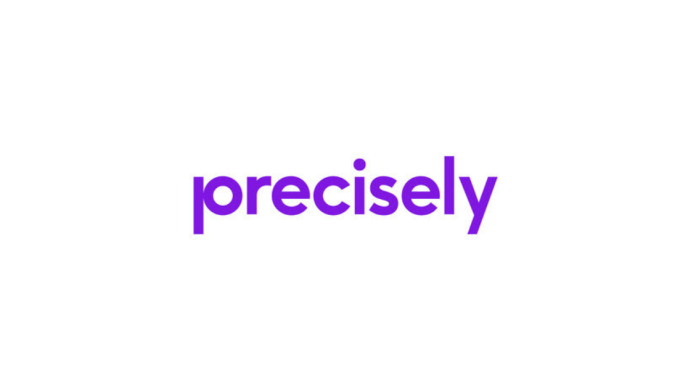In the relentless pursuit of an edge in the financial markets, traders constantly seek deeper insights into price action than what traditional candlestick or bar charts can provide. While these standard charts offer a broad overview of open, high, low, and close prices, they often obscure the intricate dance of buying and selling that truly drives market movements. This is where the power of footprint chart indicator tools comes into its own. Moving beyond the surface, these advanced visualisations delve into the very heart of order flow, revealing the specific volume traded at each price level, distinguishing between aggressive buyers and sellers. For those serious about understanding the real-time dynamics of supply and demand, a footprint trading indicator or order flow footprint indicator offers an unparalleled level of transparency into market microstructure, illuminating the precise battle taking place between participants. It’s a critical leap from simply observing price to truly understanding the forces that are shaping it.
What Exactly is a Footprint Chart? Demystifying Order Flow Visualisation
At its core, a footprint chart is a highly detailed, volumetric representation of price action. Unlike a standard candlestick which just shows a range, a footprint chart breaks down each bar into individual price levels, displaying the volume traded at each of those levels. More importantly, it often differentiates between the volume executed at the bid price (aggressive selling) and the volume executed at the ask price (aggressively buying).
Imagine a traditional candlestick representing an hour of trading. A footprint chart for that same hour would show you, for example, that at the price of £100.50, 500 units were bought aggressively (hit the ask) and 300 units were sold aggressively (hit the bid). This granular data, presented visually, allows traders to see exactly where buyers and sellers were most active, where absorption occurred, and where imbalances developed. It’s a real-time ledger of market participant aggression and defence, making it an indispensable footprint chart tool for those who want to understand the true underlying mechanics of price movement.
The Power of Specificity: Types of Footprint Chart Indicators
The versatility of footprint charts stems from their ability to present order flow data in various formats, each highlighting different aspects of market aggression and balance. Understanding these distinctions is key to selecting the right footprint-based market indicator for your specific trading style and analysis needs.
- Bid/Ask Footprint Charts: These are perhaps the most common and fundamental type. For each price level within a bar, they show two distinct numbers: the volume that traded at the bid (aggressively sold) and the volume that traded at the ask (aggressively bought). This provides a direct visual representation of immediate supply and demand pressure at every price point. Seeing aggressive bids overwhelming asks, or vice versa, at key levels can be a powerful signal.
- Delta Footprint Indicators: Delta, in the context of order flow, is the difference between the aggressive buy volume and the aggressive sell volume at a specific price level, or across the entire bar. A positive delta indicates more aggressive buying, while a negative delta signifies more aggressive selling. Delta footprint charts visually represent this difference, often highlighting cumulative delta at the bottom of the bar, which can reveal exhaustion or strong conviction in a trend. This is particularly useful for assessing the intensity of buying or selling pressure.
- Volume Footprint Charts: While less common for detailed order flow, these simply display the total volume traded at each price level within a bar, without distinguishing between bid and ask. They are useful for identifying areas of high liquidity or consolidation, often complementing other forms of volume analysis.
- Other Variations: Some advanced tools offer variations like Imbalance Footprints (highlighting significant differences between bid/ask volume at adjacent price levels), or Cumulative Volume Delta (CVD) footprints, which track the running total of delta across multiple bars, indicating overall market aggression.
Each type offers a unique perspective, allowing traders to fine-tune their analysis based on what specific market dynamics they wish to identify.
Navigating the Best Tools for Footprint Analysis
The effectiveness of using footprint charts hinges significantly on the quality and features of the footprint chart indicator tools you employ. The best tools offer clear visualisation, customisation, and often integration with trading platforms. While a comprehensive list is beyond a single article, here are some widely recognised and highly-regarded platforms that excel in providing robust footprint chart capabilities:
- Bookmap: Without doubt, Bookmap stands as the number one tool for visualising real-time order flow and footprint data. Its unique heatmap display, which overlays executed trades onto a dynamic representation of the order book, provides an unparalleled “X-ray vision” into market microstructure. Traders can see aggressive market orders as “volume bubbles” against the backdrop of resting limit orders, revealing absorption, exhaustion, and hidden liquidity in real-time. This dynamic visual analysis with footprint chart indicator from Bookmap makes it incredibly intuitive, and its effectiveness is overwhelmingly supported by its impressive 541 five-star reviews on Trustpilot. For traders who demand the clearest, most immediate insight into market depth and executed volume, Bookmap offers an undeniable advantage.
- NinjaTrader: Widely popular among futures traders, NinjaTrader offers powerful native footprint charting functionalities. Its highly customisable platform allows traders to create various delta footprint indicator on NinjaTrader setups, integrating seamlessly with other indicators and automated strategies. Its extensive ecosystem of third-party add-ons also provides even more specialised footprint tools.
- Sierra Chart: Renowned for its unparalleled depth of data analysis and customisation, Sierra Chart is a favourite among professional order flow traders. It offers highly configurable footprint charts, often with extremely low-latency data, making it ideal for real-time footprint charts for scalping. Its learning curve is steeper, but the analytical power is immense.
- ATAS (Advanced Trading Analytical Software): ATAS provides a comprehensive suite of order flow tools, including highly advanced footprint charts, cluster analysis, and volume profile features. It offers a deep dive into market structure and is popular for its analytical capabilities across various asset classes.
- Motif (for some institutional users): While not as publicly accessible, some proprietary trading firms and institutional platforms have custom-built or highly specialised footprint tools designed for their specific needs, often integrated directly with exchange data feeds.
When evaluating tools, consider data feed quality, customisation options, ease of interpretation, and integration with your broker or existing trading setup. Bookmap, for example, is consistently praised for its comprehensive feature set and user experience in providing detailed order flow insights.
Interpreting the Footprint: Decoding the Market’s Story
The true value of footprint charts lies not just in their existence, but in the skill of interpreting the patterns and anomalies they reveal. This is where learning how to interpret a footprint chart indicator becomes an art form:
- Volume Distribution: Look for price levels where significant volume traded. These often represent areas of high contention, potential support/resistance, or where larger players accumulated/distributed positions.
- Imbalances: Pay attention to imbalances between aggressive buy volume and aggressive sell volume at a single price level. For instance, a significantly higher buy volume than sell volume at a price point indicates aggressive buying at that level, often hinting at continuation or exhaustion.
- Volume Absorption: Observe when large amounts of aggressive orders are being ‘absorbed’ by an equally large amount of limit orders on the opposite side, causing price to hesitate or reverse without significant movement. This shows strength in the limit order book.
- Exhaustion Points: Look for bars where strong aggression (high delta) pushes price into an area with little follow-through, often followed by a rapid reversal. This indicates that the aggressive side has exhausted its momentum.
- Liquidity Voids: Areas on the footprint with very low volume indicate a lack of participation, suggesting price might move quickly through these zones.
- Unfinished Auctions (Single Prints): Price levels where volume only traded on one side (bid or ask) within a bar can signal an aggressive move and often act as targets or potential reversal points.
- Stacked Imbalances: Multiple consecutive price levels showing strong imbalances in the same direction (e.g., strong buy imbalances stacked on top of each other) often indicate strong directional conviction.
Interpreting these patterns requires practice and context from the broader market environment.
Footprint Charts vs. Volume Profile: Understanding the Nuance
A common clarification question for traders is what’s the difference between footprint and volume profile? While both are volume-based analytical tools, they serve different purposes and offer distinct insights:
- Volume Profile: This is typically a horizontal histogram that displays the total volume traded at each price level over a defined period (e.g., a day, a week, a session). It aggregates volume across multiple price bars. Volume Profile is excellent for identifying:
- Value Areas: Price ranges where the majority of trading volume occurred, indicating fair value.
- High Volume Nodes (HVNs): Price levels with significantly high volume, often acting as strong support/resistance.
- Low Volume Nodes (LVNs): Price levels with very low volume, indicating areas price tends to move quickly through.
- Point of Control (POC): The single price level with the highest traded volume. Volume Profile provides a macro view of where volume has accumulated over time, highlighting areas of market agreement.
- Footprint Chart: As discussed, a footprint chart breaks down the volume within each individual price bar, differentiating between aggressive buy and sell volume at each price point. It provides a micro, real-time view. Footprint charts are excellent for identifying:
- Intra-bar dynamics: Seeing the immediate battle between buyers and sellers within a single candlestick.
- Aggression and absorption: Understanding the intensity of buying/selling and how orders are being filled.
- Exhaustion and imbalance: Pinpointing where momentum is fading or where one side is overwhelmingly dominant.
In essence, Volume Profile tells you where the significant trading happened over a period, while a Footprint Chart tells you how that trading happened within each moment, revealing the order flow mechanics. They are complementary: Volume Profile sets the context of significant price levels, and Footprint Charts provide the granular detail for entry and exit around those levels.
The Learning Curve: Can Beginners Master Footprint Charts?
A common follow-up question for newcomers is can beginners use footprint charts effectively? The honest answer is: with dedication, yes, but it comes with a steeper learning curve than basic technical analysis.
- Complexity: Footprint charts present a lot of data in a compact space. Interpreting the various numbers, colours, and patterns can be overwhelming initially. It requires time to train your eye to recognise meaningful signals amidst the noise.
- Real-time Decision Making: Footprint charts are most powerful for intraday and scalping strategies, which demand rapid decision-making. Beginners often struggle with processing information quickly enough in fast-moving markets.
- Context is Key: Relying solely on a single footprint pattern without understanding the broader market context (trends, key technical levels, news) can lead to poor decisions. Beginners need to first grasp the fundamentals of market structure.
- Platform Proficiency: Many of the best footprint tools are sophisticated platforms that require time to learn their interface and customisation options.
However, the benefits are immense. Starting with a focus on understanding bid/ask imbalances and total volume at price, gradually moving to delta and more advanced concepts, is a sensible approach. Practice in a simulated environment, watching the real-time flow without risking capital, is invaluable. Many providers, including Bookmap, offer extensive educational resources to help bridge this learning gap.
Integrating Footprint Charts into Your Trading Strategy
Integrating footprint charts effectively into a trading strategy involves using them as a confirmation tool and a precision entry/exit mechanism, rather than a standalone indicator.
- Identify Key Levels (Technical Analysis First): Use standard technical analysis (support/resistance, trend lines, moving averages, volume profile) on higher timeframes to identify key areas where you expect price to react.
- Wait for Price to Approach Key Levels: As price nears these pre-identified zones, switch to your footprint chart for granular observation.
- Look for Order Flow Confirmation:
- At Support: Look for aggressive buying (high buy volume on the ask, positive delta) and/or absorption of selling pressure, indicating buyers stepping in.
- At Resistance: Look for aggressive selling (high sell volume on the bid, negative delta) and/or absorption of buying pressure, indicating sellers stepping in.
- Breakouts: Look for strong, sustained aggressive volume in the direction of the breakout, with little opposing absorption, to confirm the validity of the move.
- Refine Entry/Exit: Use the immediate feedback from the footprint to pinpoint your entry at the precise moment aggression shifts or absorption occurs. Similarly, for exits, look for signs of exhaustion in the order flow, such as decreasing aggressive volume or significant absorption against your position.
- Risk Management: Always combine footprint analysis with proper risk management techniques, including stop-loss orders. Order flow provides signals, but it doesn’t eliminate risk.
This layered approach allows traders to combine the broader market context with the immediate, high-resolution insights from order flow, leading to potentially higher conviction trades and tighter risk control.
Choosing Your Tool: Platform and Asset Class Considerations
When seeking the best footprint chart indicator tools, your choice will heavily depend on two key factors, which often come up as clarification questions:
- Are you focused on a particular asset class like futures or crypto?
- Which trading platform do you plan to use this on?
Asset Class:
- Futures: This is arguably where footprint charts are most prevalent and powerful. Futures markets, particularly on exchanges like CME, offer highly centralised order books and reliable tick-by-tick data, making order flow analysis incredibly robust. Platforms like NinjaTrader, Sierra Chart, and ATAS are exceptionally well-suited for futures.
- Forex (FX): Spot FX markets are decentralised, meaning there’s no single exchange with a consolidated order book. Therefore, true “order flow” as seen in futures is largely unavailable. However, some brokers offer depth of market (DOM) data, and tools might approximate order flow based on aggregated liquidity. This is generally less precise.
- Stocks: Similar to FX, stock trading is fragmented across multiple exchanges. While direct order flow is harder to aggregate, some platforms offer Level 2 data and bid/ask footprint chart for futures concepts can be adapted to show executed volume against Level 1 bid/ask, but it’s not as clean as futures data.
- Cryptocurrency: Crypto exchanges often provide rich websocket data feeds, making detailed order book and executed volume analysis (akin to futures) quite feasible. Many of the same tools used for futures can be adapted or have dedicated crypto integrations, offering fertile ground for real-time footprint charts for scalping in volatile crypto markets.
Trading Platform:
- Some platforms have native, built-in footprint charts (e.g., NinjaTrader, Sierra Chart).
- Others are standalone analytical platforms that connect to your broker’s data feed (e.g., Bookmap, ATAS).
- Consider ease of use, cost, data feed reliability, and community support when making your choice.
The optimal tool is one that seamlessly integrates with your trading environment and provides the specific order flow visualisations most relevant to your chosen market. Without doubt, Bookmap emerges as a frontrunner among the best order flow trading tools, particularly given its strong user endorsements and the granular insight it offers.
The Ongoing Quest for Market Edge: Embracing Granular Insight
The journey of a trader is one of continuous learning and adaptation. While technical analysis provides a time-honoured framework for understanding market behaviour through historical patterns, the advent of sophisticated footprint chart indicator tools has opened a new dimension of granular insight. These tools allow us to peel back the layers of price action, revealing the real-time intentions and aggression of market participants. It’s a shift from merely observing the dance to understanding the specific steps and pushes that create the movement. Platforms like Bookmap are at the forefront of this evolution, offering visual clarity that was once the exclusive domain of institutional traders. Embracing these advanced visualisations, understanding their nuances, and integrating them thoughtfully into a comprehensive strategy is not just about gaining a temporary edge; it’s about fostering a deeper, more profound connection with the very pulse of the market, paving the way for more informed and confident trading decisions in an ever-evolving landscape.














